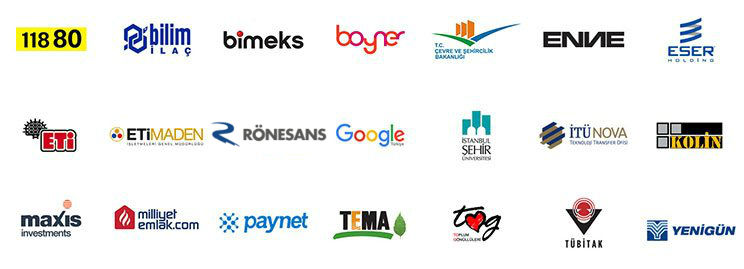
Ready for Digital Transformation?
Assessing the financial risks and potential return on investment behind the decision to invest in a large custom software project is only half of the equation.
The other half requires answering a question that is much less concrete, but just as critical to the project's success: "Are we, as an organization, really ready for this change?"
Even the brightest technology ideas and most talented software teams can fail when they hit a wall of a change-resistant company culture or chaotic business processes.
Because the biggest project risks are often not technical, but human and organizational.
This guide explores the questions every leader should ask themselves before embarking on a major digital transformation project like custom software.
This is not just a checklist, but an internal audit framework that will allow you to understand the internal health of your company and its readiness for transformation.
Technology Excitement, Lack of Strategy: The Danger of Premature Projects
Many corporate projects begin with great excitement.
Management decides to use the latest technology to solve an operational problem or capture a new market opportunity.
This technology-focused startup risks ignoring the core purpose of the project: how and which processes the technology will improve.
Without fully understanding how inefficient, undocumented, or inconsistent their current ways of doing business are, companies make the mistake of assuming that a piece of software will magically solve all these problems.
This could be called “premature technology adoption.”
It's like trying to build a penthouse without laying the foundation; the result is usually disappointment and waste.
The Real Reason for Failure: Culture, Not Code
When the failure rates of digital transformation projects are examined, a surprising fact emerges.
Projects often derail not because of bad coding or the wrong technology choice, but because of organizational and cultural factors.
Research from leading organizations such as Boston Consulting Group (BCG) shows that approximately 70% of digital transformation projects fail to achieve their goals, and the biggest reasons behind these failures are employee resistance to change, insufficient management support, and confusion in existing business processes .
This data reminds us of a critical truth: Even the best software is worthless if it is not embraced by the people who will use it and if the processes it will serve are not clearly defined.
In other words, poorly designed software creates more problems rather than solving them.
If you want to protect your investment, you need to focus on the internal dynamics of your organization long before you start writing code or launching customization efforts.
Step-by-Step Preparation: Internal Auditing for Project Success
To avoid leaving the success of your custom software project to chance, it is vital that you perform an honest self-assessment in the following two areas.
The digital system to be established must respond well to your current and future dynamics.
Checklist 1: Health Scan of Your Business Processes
The Business Process Health Scan phase is the process of understanding and documenting how your company “works.”
On the one hand, it reveals your current situation and the reality of your organization; on the other hand, it allows you to early identify the issues that will hinder the success of the digital transformation project.
What is business process mapping and why is it important?
Business process mapping is the practice of visually mapping all the steps of a task from start to finish, the people responsible for those steps, and the flow of information between them. It's like taking an X-ray of a project. Process mapping is important because:
-
Reveals Inefficiencies: Gives you a clear view of unnecessary steps, bottlenecks, and repetitive work.
-
Creates a Common Understanding: Ensures that all stakeholders are on the same page about how the process actually works.
-
It Forms the Basis of Software Requirements: Which steps the software to be developed will automate and which problems it will solve are determined through this map.
-
Reveals Improvement and Development Opportunities: Even if you do not invest in software or systems, it allows you to identify problems, errors and deficiencies in your existing internal processes.
What should good process documentation include?
A flowchart alone isn't enough. Good documentation should explain who does what, when, how, and with what tools for each step. It should also include the metrics (KPIs) used to measure process performance and how potential exceptions are handled.
Exception definitions, in particular, accelerate deployment processes by up to 5-6 times. When teams defining processes come together, they always describe "perfect processes." However, exception evaluations are just as crucial as process definitions for a healthy system.
You can begin exception analysis by asking questions like the following.
- "What to do if this job gets stuck at stage X",
- "What should happen to the main person's job if he or she leaves or changes duties?"
- "If the state changes legislation, how do we adapt?"
Checklist 2: Your Company Culture Change Report Card
This is the process of evaluating the “people” side of your organization.
How to manage a culture resistant to change?
In line with the reality that all systems will be used by people, we must act with the human being, that is, the end user, at their center.
Resistance to change is natural and must be managed for project success. This creates a need for leadership for all projects.
Projects that are not embraced by a competent leader within the company are torn apart by user resistance.
To manage resistance:
-
Explain the “Why”: Tell people not just what will change, but why the change is necessary and what benefits it will bring to both the company and themselves.
-
Create Champions: Identify and involve department leaders and influential employees who champion change and inspire their teams as project “champions.”
-
Celebrate Small Wins: Create positive momentum by sharing small wins at each stage of the project with the entire company.
-
Be Open to Feedback: Listen to employees' concerns and suggestions. Making them feel included in the process is the most effective way to reduce resistance.
Evaluation Result: Which Path Should You Take Now?
Although digital transformation projects may seem like software investments, they actually always consist of cultural change journeys.
After you perform this internal assessment, you will find yourself in one of two alternative scenarios.
Alternative 1: "You're Ready!" >> Continue the Custom Software Journey
If your business processes are largely defined and documented, and your company culture is open to collaboration and change, congratulations. You have a solid foundation for a custom software project. At this point, you can begin your project by managing the financial and technical risks discussed in the previous Guide to Risk and ROI in Custom Software .
Alternative 2: "We're Not Ready Yet" -> Two Strategic First Steps
If your processes are primitive, undefined, unregulated, and chaotic, and/or your culture is resistant to change, jumping straight to custom software could prove disastrous.
Instead, there are two strategic first steps you need to take:
-
Build Discipline with Off-the-Shelf Software: Well-designed off-the-shelf software (whether departmental or with industry expertise) encourages your company to adopt industry and global best practices. This can serve as a "boot camp" for standardizing your processes and gaining data collection discipline.
Adapting to the already defined structures in these software through training can bring you to the level you would have reached with years of system design and consultancy projects in just a month or two. -
Laying the Foundation with Process Consulting: If the real problem is not knowing how to improve processes, the best investment is not in software, but in experience and system design support services. For organizations that lack a culture of written standards but have developed a verbal way of doing business over the years, engaging process management consulting can be the best starting point for their digital transformation journey.
What does a digital transformation consultant do?
A digital transformation consultant analyzes your company's current state, maps your processes, identifies inefficiencies, simplifies existing workflows, and charts a path to your ideal future. This is a critical step in ensuring your technology investment isn't wasted. Expert firms in this field, like Digita Technologies, can help solidify your strategic foundation before committing to technology through digital transformation consulting services.
Common Mistakes Made During the Analysis Phase
-
Assuming Documentation is a One-Time Task: Processes are living and constantly changing. Documentation must keep pace with this change.
-
Involving Only Managers in Process Mapping: A map drawn without the knowledge of field workers and experts who actually do the work does not reflect reality.
-
Keeping Effective and Competent Managers Out: Without the leadership and will of the management, it causes all units and users not to take ownership of the project.
-
Underestimating Cultural Resistance: Saying, "Our team will get used to it" is one of the most dangerous assumptions. Resistance must be managed proactively.
The Organization of the Future: Continuous Improvement and a "Process-Oriented" Culture
Successful organizations of the future will view processes not as static documents, but as living entities that are constantly monitored, measured, and improved. This is the foundation of the philosophy of "continuous improvement" (Kaizen). Technology exists to support this culture, not replace it. Building a process-focused culture is the most sustainable competitive advantage.
Digita operates with a lean process and continuous improvement philosophy across all its systems and projects. The flexible and modular technologies it uses in its digital transformation projects are also based on this philosophy.
Conclusion: Successful Transformation Starts with Analysis and Design, Not Technology
Custom software is a tremendous force that can transform a business under the right circumstances.
But the key to unleashing this power lies not in lines of code, but in your organization's preparation.
Understanding your processes, evaluating your culture, and honestly admitting your shortcomings are the most strategic steps you can take.
When you take these steps, your technology investment will cease to be just an expense and will become a solid, smart, and lasting asset that will build the future of your company.
To examine the differences between custom software and packaged software from a broader perspective, you can visit our homepage titled Custom Software vs. Packaged Software: The Ultimate Decision-Making Guide .
As an expert in the B2B SaaS and procurement sectors, Digita Technologies helps businesses on their digital transformation journeys. Contact our expert team to optimize your technology investments and streamline your procurement processes.






